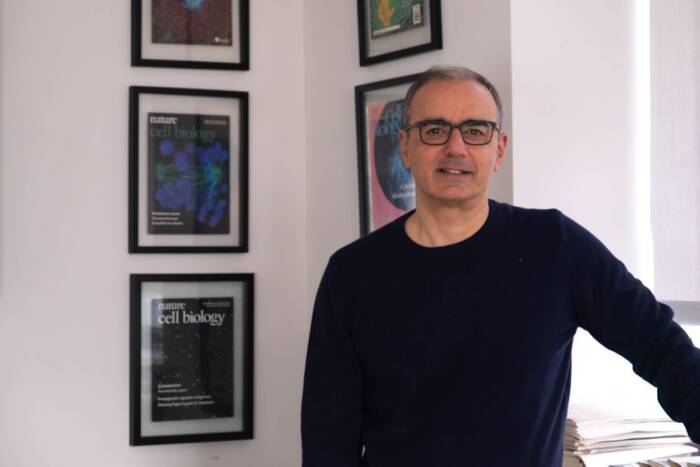Lavoisier painting returns to Rockefeller
by ZACH VEILLEUX
For more than 50 years, a dramatic life-size painting of Antoine-Laurent Lavoisier, considered by many to be the father of modern chemistry, hung in Welch Hall. Painted in 1788 by Jacques-Louis David, it depicts Lavoisier seated at his workbench, lab notebook in hand, surrounded by scientific apparatuses and conversing with his wife and collaborator Marie-Anne Pierette Paulze. It’s a dramatic and inspirational work of art, but since 1977 viewing it has required a long walk to Fifth Avenue. The university sold it 34 years ago and it now hangs in The Metropolitan Museum of Art.
Originally a gift from John D. Rockefeller, who bought it (via a dealer) from Mr. Lavoisier’s family, the painting was one of several valuable works sold in the seventies. The proceeds from its sale — about $4 million — were used to endow two professorships and four graduate fellowships. Maclyn McCarty and Norton Zinder were the first recipients of the professorships.
Lavoisier, a French nobleman, is best known for his discovery that matter is indestructible, a key tenet of chemistry and physics. He also assembled the first comprehensive list of chemical elements, helped construct the metric system and demonstrated the role of oxygen in rusting and respiration. He was a rigorous and meticulous experimenter who overturned many of the era’s scientific beliefs but also made numerous enemies. He was branded a traitor and beheaded via guillotine during the French revolution.
“The portrait of Lavoisier and his wife has long been one my favorite works of art,” says Dr. Nurse. “It is wonderful to be able to have this magnificent painting — even a reproduction — back on display at Rockefeller.”
Nurses donate to CFC
Anne Nurse, a former nursery school teacher in the U.K., formed her relationship with the university’s Child and Family Center soon after arriving from London back in 2003.
“We were a little nervous when we heard that the new president’s wife wanted to come visit the CFC,” recalls Marjorie Goldsmith, the school’s director at the time. “But Anne turned out to be amazing. She read and told stories to the kids, organized cooking projects, and accompanied us on outdoor adventures. She became close friends with many of the teachers and the kids.”
During the seven years that the Nurses lived on campus, Ms. Nurse devoted hundreds of hours to the CFC, and was instrumental in helping set up the children’s garden, located between Caspary Auditorium and Philosophers Garden. She spent many spring mornings working shoulder-to-shoulder with the preschoolers as they dug up worms, plucked weeds and ultimately harvested green beans, basil and tomatoes.
Although Ms. Nurse, who moved back to London last fall, is no longer able to regularly spend time at the CFC, her presence continues to be felt. In December, the Nurses announced they would donate $15,000 to the CFC to help ensure that the community’s children continue to have new opportunities to explore nature.
“Although Anne will be sorely missed, it’s wonderful to be able to expand our outdoor education program thanks to the Nurses’ generous gift,” says Karen Booth, the center’s director. “Anne shared her deep sense of wonder and delight in learning with the children, whether making gingerbread cookies, telling stories, going out to the library or dancing and singing in music class. She made a real difference in the children’s lives.”




